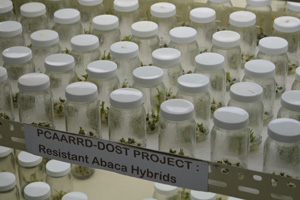 The Philippine Council for Agriculture, Aquatic and Natural Resources Research and Development (PCAARRD) of the Department of Science and Technology (DOST) will showcase the best of its agri-aqua research and development (R&D) outputs generated from 2010 to 2016 in an event dubbed as SIPAG FIESTA on March 2 to 4.
The Philippine Council for Agriculture, Aquatic and Natural Resources Research and Development (PCAARRD) of the Department of Science and Technology (DOST) will showcase the best of its agri-aqua research and development (R&D) outputs generated from 2010 to 2016 in an event dubbed as SIPAG FIESTA on March 2 to 4.
 The Philippine Council for Agriculture, Aquatic and Natural Resources Research and Development of the Department of Science and Technology (DOST-PCAARRD) and the Young Professionals for Agricultural Development (YPARD) Philippines conducted a social media training for research and development practitioners at the Council’s headquarters recently.
The Philippine Council for Agriculture, Aquatic and Natural Resources Research and Development of the Department of Science and Technology (DOST-PCAARRD) and the Young Professionals for Agricultural Development (YPARD) Philippines conducted a social media training for research and development practitioners at the Council’s headquarters recently.
 Director General Ruben G. Echeverría of the Palmira, Colombia-based Centro Internacional de Agricultura Tropical (CIAT) or International Center for Tropical Agriculture visited the Philippine Council for Agriculture, Aquatic and Natural Resources Research and Development of the Department of Science and Technology (DOST-PCAARRD) last January 27, 2016. With the CIAT Director General was CIAT’s Director for Asia Dindo M. Campilan and University of the Philippine Los Baños (UPLB) Professor and
Director General Ruben G. Echeverría of the Palmira, Colombia-based Centro Internacional de Agricultura Tropical (CIAT) or International Center for Tropical Agriculture visited the Philippine Council for Agriculture, Aquatic and Natural Resources Research and Development of the Department of Science and Technology (DOST-PCAARRD) last January 27, 2016. With the CIAT Director General was CIAT’s Director for Asia Dindo M. Campilan and University of the Philippine Los Baños (UPLB) Professor and
...
 While the Philippines is one of the ten biggest producers of tilapia, the country’s production goes mainly to the domestic market. This is because the national marketable size (143-200g/piece) falls short of the global requirement for live (400-500g/piece) and fillet fish (700-1000g/piece).
While the Philippines is one of the ten biggest producers of tilapia, the country’s production goes mainly to the domestic market. This is because the national marketable size (143-200g/piece) falls short of the global requirement for live (400-500g/piece) and fillet fish (700-1000g/piece).
Prompted by this concern, the Philippine Council for Agriculture, Aquatic and Natural Resources Research and Development of the Department of Science and Technology (DOST-PCAARRD) crafted the Industry
...
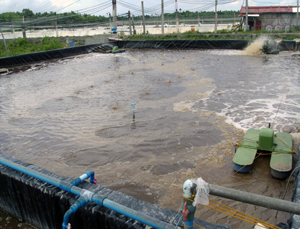 Farmed shrimps is an important foreign exchange earner. The Philippines is the 6th largest producer of shrimps with annual production of about 50,000 metric tons (mt). However, outbreak of diseases such as White Spot Syndrome Virus (WSSV), Hypodermic Haematopoetic Infectious Necrosis Virus (IHHNV), Taura Syndrome Virus (TSV), and Yellow Head Virus (YHV) has slumped the industry.
Farmed shrimps is an important foreign exchange earner. The Philippines is the 6th largest producer of shrimps with annual production of about 50,000 metric tons (mt). However, outbreak of diseases such as White Spot Syndrome Virus (WSSV), Hypodermic Haematopoetic Infectious Necrosis Virus (IHHNV), Taura Syndrome Virus (TSV), and Yellow Head Virus (YHV) has slumped the industry.
A profitable business venture, soft-shell crab farming, has become popular as it provides employment and income. As such, wild crab fisheries are being depleted.
To avoid further depletion of said resources, the Southeast Asian Fisheries Development Center Aquaculture Department (SEAFDEC/AQD) and the Philippine Council for Agriculture and Natural Resources Research and Development of the Department of Science and Technology (DOST-PCAARRD) published a manual.
Titled Soft-shell Crab Production Using
...
With the milkfish culture gaining popularity in the Philippines, there is a rapid increase in its production through the expansion of grow-out culture in coastal areas and the adoption of thorough farming practices. Consequently, with the latest strengthening of the milkfish culture system, disease occurrences have been unavoidable in all stages of milkfish culture.
To address this concern, the University of the Philippines Visayas (UPV) and the Southeast Asian Fisheries Development Center
...
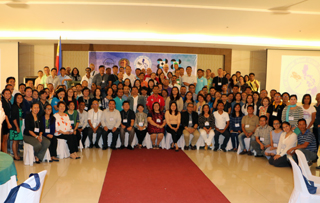 The Southeast Asian Fisheries Development Center – Aquaculture Department (SEAFDEC-AQD), in collaboration with the University of the Philippines Visayas (UPV) and the Philippine Council for Agriculture, Aquatic and Natural Resources Research and Development of the Department of Science and Technology (DOST-PCAARRD), recently held the first National Mud Crab Congress at Diversion 21 Hotel, Iloilo City.
The Southeast Asian Fisheries Development Center – Aquaculture Department (SEAFDEC-AQD), in collaboration with the University of the Philippines Visayas (UPV) and the Philippine Council for Agriculture, Aquatic and Natural Resources Research and Development of the Department of Science and Technology (DOST-PCAARRD), recently held the first National Mud Crab Congress at Diversion 21 Hotel, Iloilo City.
The congress, which had the theme, Philippines: In the forefront of the mud crab industry
...
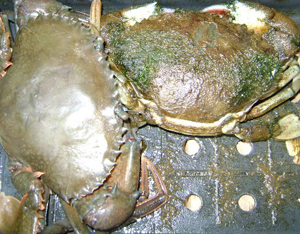 The Philippines is the world’s second top producer of mud crab (also known as mangrove crab).
The Philippines is the world’s second top producer of mud crab (also known as mangrove crab).
Production is done using polyculture system (or the combination of several species) in 30% of brackishwater ponds in the country. However, supply of crablets for farming is still sourced from the wild. The industry is estimated to require 36-45 million crablets annually.
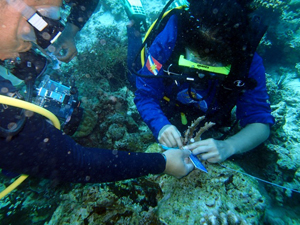 The Philippines’ coral reefs is the largest in Southeast Asia, with 915 reef fish species and more than 400 scleractinian coral species, 12 of which are endemic. It is part of the coral triangle and according to the Australian non-profit company UNICO Conservation Foundation, it has more species of fish and corals than any other marine environment on earth.
The Philippines’ coral reefs is the largest in Southeast Asia, with 915 reef fish species and more than 400 scleractinian coral species, 12 of which are endemic. It is part of the coral triangle and according to the Australian non-profit company UNICO Conservation Foundation, it has more species of fish and corals than any other marine environment on earth.
However, destructive fishing has degraded coral reefs. These include the “muro-ami” fishing technique, which involves pounding on reefs to
...
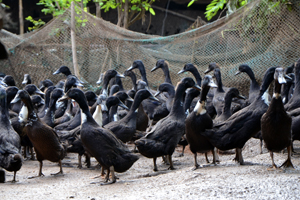 In 2010, the duck industry was very profitable and vibrant, with an estimated population of 10.8 million head. Now, challenges are weighing it down. Decline in the number and quality of breeders and lack of stable supply of ready-to-lay pullets are among the major factors contributing to the duck industry’s downtrend. Application of various new technologies in housing and feeding seemingly failed to address the problem.
In 2010, the duck industry was very profitable and vibrant, with an estimated population of 10.8 million head. Now, challenges are weighing it down. Decline in the number and quality of breeders and lack of stable supply of ready-to-lay pullets are among the major factors contributing to the duck industry’s downtrend. Application of various new technologies in housing and feeding seemingly failed to address the problem.
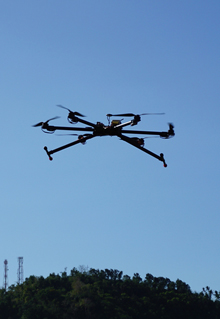 The effects of climate change are getting worse every second. Countries near the Pacific Ocean like the Philippines now have strong typhoons that people have not experienced nor anticipated. Long term changes in the temperature and precipitation pattern lead to prolonged droughts or El Niño events and increased floods or La Niña episodes. Increase in climatic variability leads to shift in production season and pest and disease patterns that threaten agricultural productivity and stability of crops
The effects of climate change are getting worse every second. Countries near the Pacific Ocean like the Philippines now have strong typhoons that people have not experienced nor anticipated. Long term changes in the temperature and precipitation pattern lead to prolonged droughts or El Niño events and increased floods or La Niña episodes. Increase in climatic variability leads to shift in production season and pest and disease patterns that threaten agricultural productivity and stability of crops
...
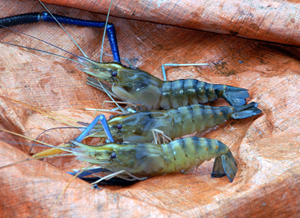 Farmed shrimp is an important foreign exchange earner. The Philippines is the 6th largest producer of shrimps with annual production of about 50,000 mt. However, outbreak of viral diseases such as White Spot Syndrome Virus (WSSV), Hypodermic Haematopoetic Infectious Necrosis Virus (IHHNV), Taura Syndrome Virus (TSV), and Yellow Head Virus (YHV) have caused the slump of the industry.
Farmed shrimp is an important foreign exchange earner. The Philippines is the 6th largest producer of shrimps with annual production of about 50,000 mt. However, outbreak of viral diseases such as White Spot Syndrome Virus (WSSV), Hypodermic Haematopoetic Infectious Necrosis Virus (IHHNV), Taura Syndrome Virus (TSV), and Yellow Head Virus (YHV) have caused the slump of the industry.
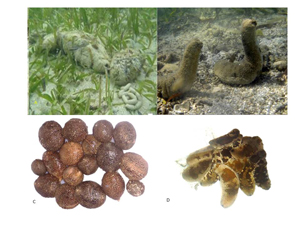 Sea cucumbers are high-value marine invertebrates that used to abound in the country’s coastal waters. They are well-known as food and are highly recognized for their ecological and pharmaceutical values. There are about 200 sea cucumber species in the country, which include 40 high-value species.
Sea cucumbers are high-value marine invertebrates that used to abound in the country’s coastal waters. They are well-known as food and are highly recognized for their ecological and pharmaceutical values. There are about 200 sea cucumber species in the country, which include 40 high-value species.
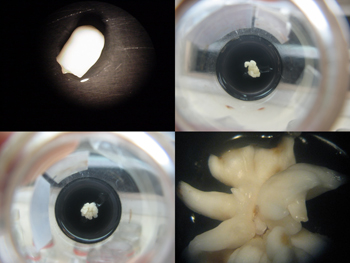 Coconut is considered as the Philippines’ top agricultural export, with US$1.49 billion revenues generated in 2011. It is planted in 68 provinces in the country, covering 3.56 million hectares. The coconut industry is the source of income of 3.5 million farmers, providing important economic support to the rural communities. However, low productivity (46 nuts/palm/year) from old and senile palms is one of the challenges facing the industry. Currently, the country has more than 75 million old
Coconut is considered as the Philippines’ top agricultural export, with US$1.49 billion revenues generated in 2011. It is planted in 68 provinces in the country, covering 3.56 million hectares. The coconut industry is the source of income of 3.5 million farmers, providing important economic support to the rural communities. However, low productivity (46 nuts/palm/year) from old and senile palms is one of the challenges facing the industry. Currently, the country has more than 75 million old
...

